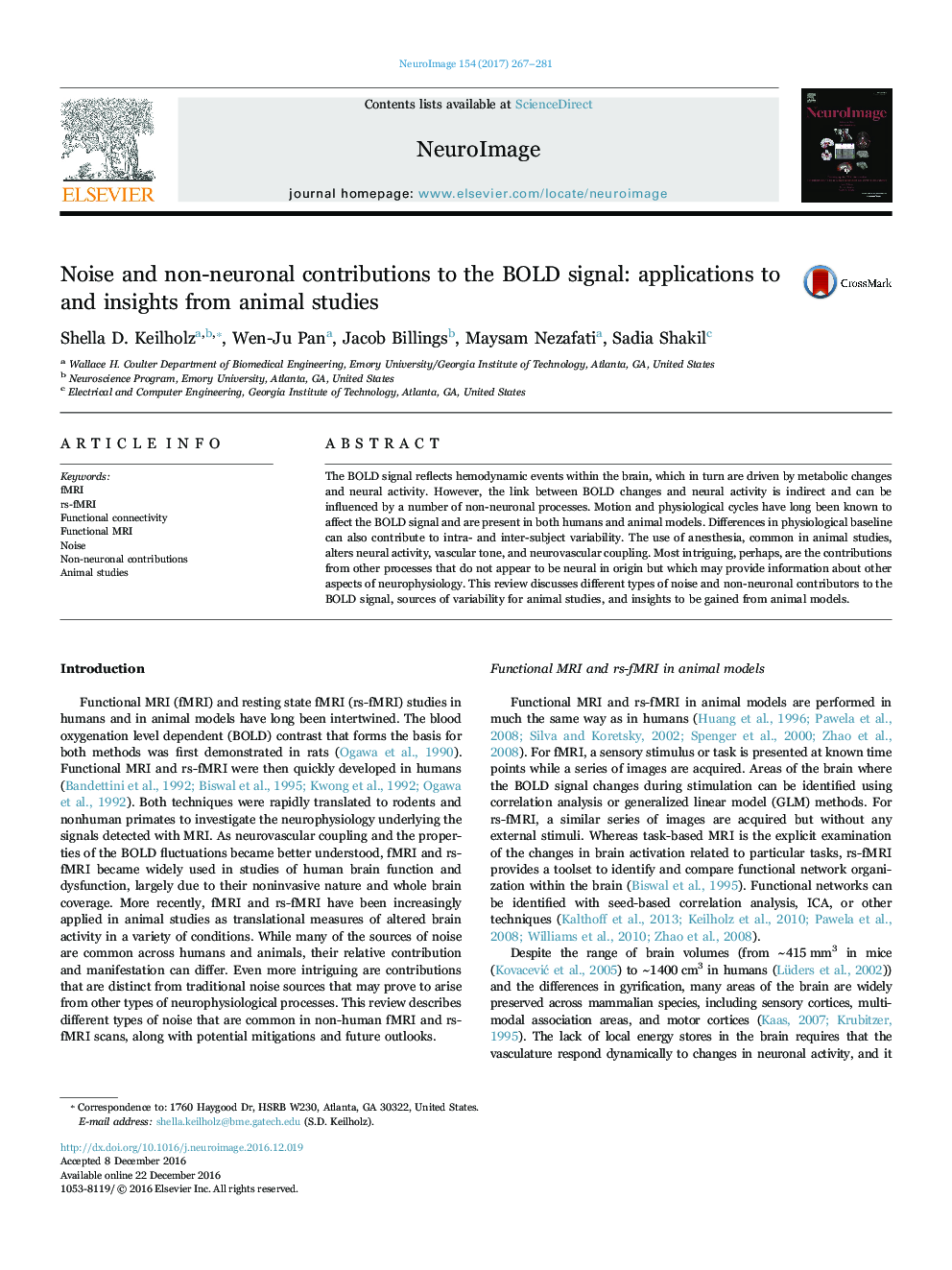| کد مقاله | کد نشریه | سال انتشار | مقاله انگلیسی | نسخه تمام متن |
|---|---|---|---|---|
| 5631073 | 1580856 | 2017 | 15 صفحه PDF | دانلود رایگان |

- Image noise, time course noise, intra-animal variability and inter-group variability all affect sensitivity to changes in neural activity using MRI
- Sources of variability in animal studies differ from those in human studies, primarily due to the use of anesthesia
- Multimodal experiments in animal studies might identify neurophysiological sources for nonneuronal contributions to the BOLD signal
The BOLD signal reflects hemodynamic events within the brain, which in turn are driven by metabolic changes and neural activity. However, the link between BOLD changes and neural activity is indirect and can be influenced by a number of non-neuronal processes. Motion and physiological cycles have long been known to affect the BOLD signal and are present in both humans and animal models. Differences in physiological baseline can also contribute to intra- and inter-subject variability. The use of anesthesia, common in animal studies, alters neural activity, vascular tone, and neurovascular coupling. Most intriguing, perhaps, are the contributions from other processes that do not appear to be neural in origin but which may provide information about other aspects of neurophysiology. This review discusses different types of noise and non-neuronal contributors to the BOLD signal, sources of variability for animal studies, and insights to be gained from animal models.
Journal: NeuroImage - Volume 154, 1 July 2017, Pages 267-281